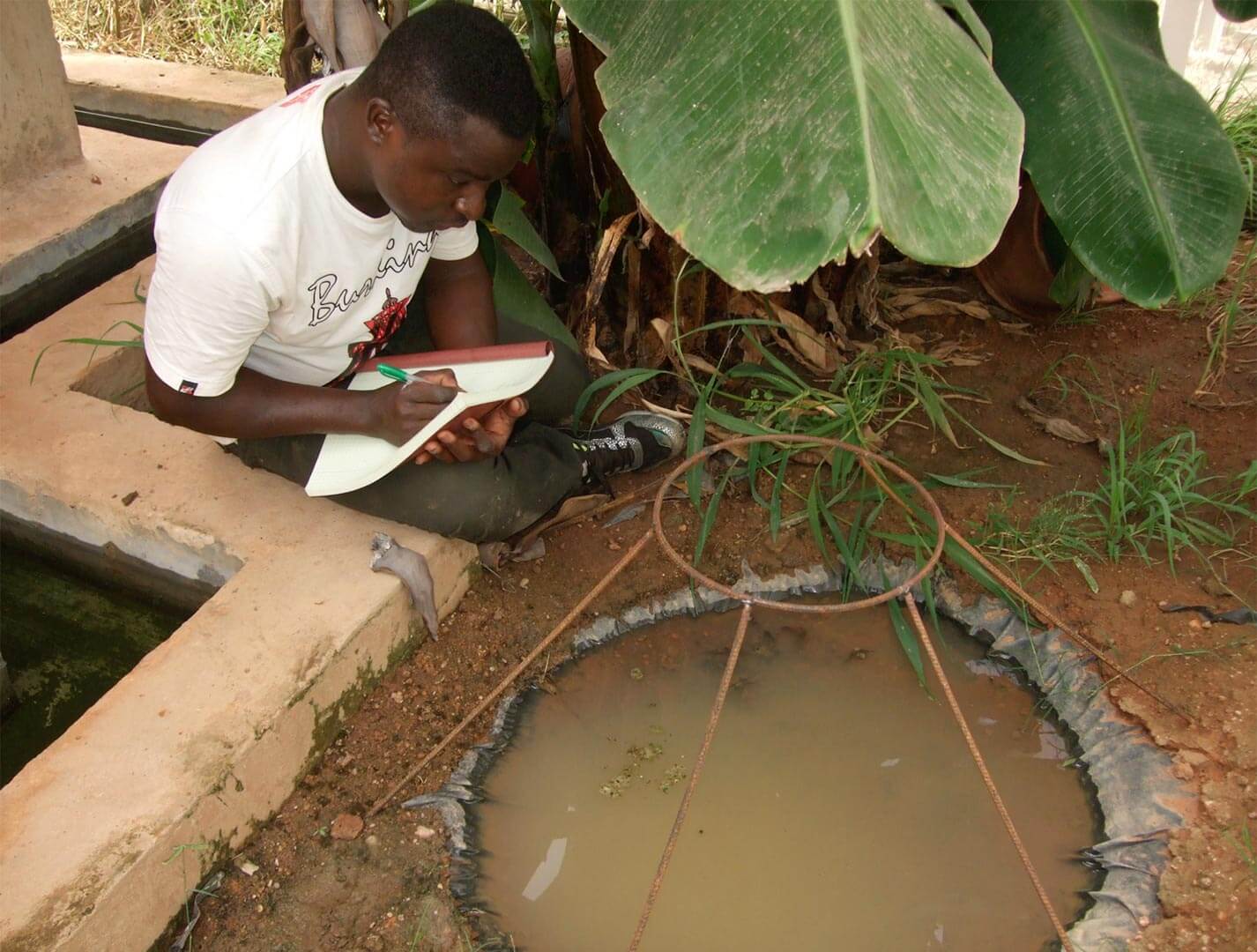- May 30, 2019
- By Kimbra Cutlip
Maryland entomology researchers working in a screened-in, simulated village setting in the West African nation of Burkina Faso quickly and safely reduced mosquito populations by more than 99% using a fungus engineered with DNA code from another species to be more deadly to the malaria-carrying insects.
It was the first trial outside of a laboratory using a transgenic approach to fighting the disease that kills 400,000 people annually and sickens hundreds of millions more, according to the World Health Organization. A team including scientists from Burkina Faso described the research in today’s issue of Science.
“No transgenic malaria control has come this far down the road toward actual field testing,” said Brian Lovett, a doctoral student in the Department of Entomology and lead author of the paper. “This paper marks a big step and sets a precedent for this and other transgenic methods to move forward.”
Decades of insecticide use have failed to control mosquitoes that carry the malaria parasite and have led to insecticide resistance among many mosquito strains. In response, scientists began genetically modifying mosquitoes as well as organisms that can help eradicate mosquitoes. Until now, none of these transgenic approaches made it beyond laboratory testing.
In the Maryland experiment, researchers used a naturally occurring pathogen that infects insects in the wild and kills them slowly. It has been used to control various pests for centuries. The scientists used a strain of the fungus that is specific to mosquitoes and engineered it to produce a toxin that kills mosquitoes more rapidly than they can breed.
The toxin, an insecticide called Hybrid, is derived from the venom of the Australian Blue Mountains funnel-web spider. It has been approved by the Environmental Protection Agency (EPA) for application directly on crops to control agricultural insect pests.
“We demonstrated that the efficacy of the transgenic fungi is so much better than the wild type that it justifies continued development,” said Raymond St. Leger, a Distinguished University Professor of entomology at UMD and co-author of the study. “You can think of the fungus as a hypodermic needle we use to deliver a potent insect-specific toxin into the mosquito.”
To ensure that their modified fungus only produces the toxin inside the body of a mosquito, the scientists tested their modified fungus on other insects in Maryland and Burkina Faso, and found that the fungus was not harmful to beneficial species such as honeybees.
“These fungi are very selective,” St. Leger said. “They know where they are from chemical signals and the shapes of features on an insect’s body. The strain we are working with likes mosquitoes.”
After demonstrating the safety of their genetically modified fungus in the lab, Lovett and St. Leger worked with scientific colleagues and government authorities in Burkina Faso to test it in a rural, malaria-endemic area. They constructed a roughly 6,550-square-foot, screened-in structure they called MosquitoSphere with chambers containing experimental huts, plants, small mosquito-breeding pools and a food source for the mosquitoes.
To compare the effect of transgenic fungus Metarhizium pingshaense to the wild-type Metarhizium fungus, they exposed 1,000 adult male and 500 adult female mosquitoes to each fungus in different chambers of MosquitoSphere. After 45 days, only 13 adult mosquitoes remained in the chamber with transgenic fungus, compared to 455 in the chamber treated with wild-type fungus. A third chamber that was not treated with fungus had 1,396 mosquitoes after 45 days.
The international team hope to test their transgenic fungus next in a local village or community. There are many regulatory and social benchmarks to meet before deploying the method in an open environment, but the researchers said this study helps make the case for such trials.
“By following EPA and World Health Organization protocols very closely, working with the central and local government to meet their criteria and working with local communities to gain acceptance, we’ve broken through a barrier,” Lovett said. “Our results will have broad implications for any project proposing to scale up new, complex and potentially controversial technologies for malaria eradication.”
